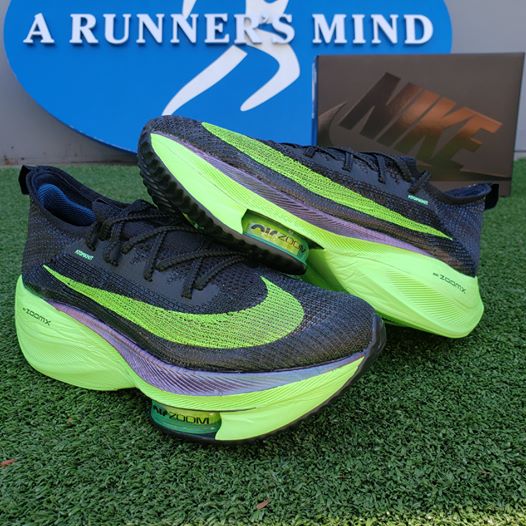Why are the Vaporfly and Alphafly so special?
The Nike Vaporfly 4%, Next%, and now the Alphafly Next%; the world’s most controversial line of shoes have made running popular enough that it actually got on the news – and not just because of the Olympics. But, what made these shoes so controversial? Was it the carbon fiber plate, the new specialized foam, or how it aided Eliud Kipchoge in accomplishing the once-thought impossible feat of a sub two-hour marathon? Well, today, with the power of SCIENCE, and hours, nay, days of research I have found the answer. For a brief moment, let’s recall an earlier post about the history and evolution of running shoes, in which we learned that Nike popularized an increase in the cushioning of shoes, especially in the back heel, with the Nike Cortez. This became a trend in daily trainers, with running shoes becoming higher in volume and overall cushioning to absorb more of…
The Evolution of Running Shoes
To whoever says that running shoes aren’t rocket science, you obviously haven’t paid attention to the latest innovations in shoe design! Carbon fiber plates act like diving boards to give runners a little extra spring, while new foam cushioning with high energy return makes shoes both more comfortable and more responsive. Then, there are heel-to-toe offsets to make running easier, but even there, we don’t see agreement — some runners choose low to no heel offset shoes, while others seek out the exact opposite. It’s a lot! So, how did shoes get to this point of complexity? Some say heel offset (the heel resting higher than the toe) in running shoes has its origins in horse riding boots, as they have extra material in the heel to sit in the stirrups more comfortably, which eventually translated into extra cushioning in the back heel for running. Others believe that it’s based on…
Science of Running: Intense Training and the Immune System
When trying to stay safe and healthy during our present public health crisis, it’s good to fact check the glut of information available to us against medically qualified sources. A big one for us? The claim that intense training can weaken the immune system. This is partly true, but don’t let that scare you into tossing away your P90x or sprint workouts just yet. We’re going to science our way through this! When looking at scientific journals and reports (listed at the end of this post), we see that when attempting intense training, there can be a temporary suppression of immune functions and thus a slight increase in susceptibility to infection, otherwise known as the “Open Window” theory. However, this occurs after prolonged sessions of intense workouts of around two to three hours, with a rest in between intervals of less than one minute, and going at close to max…
Science of Running: How We Became Runners
It has been two weeks since the shelter-in-place mandate, and there is a lot of scary news regarding health, hygiene, and how we all have to live with minimal amounts of excursions from our own homes. However, human nature and evolution goes against just staying at home, as many have taken to the streets to run off that third tub of Cheetos and escape the confinement of our couches. So, why should you join the many in going out for a run? Simple — we evolved from swinging on trees like Tarzan to becoming ultramarathon hunters, and to this day are still natural-born runners. The human body is incredible and cleverly put together in a way that makes us one of the best-equipped animals to go extreme distances. Millions of years ago, we evolved from classical primates that looked similar to current ape species. So, what changed? For starters, we…



